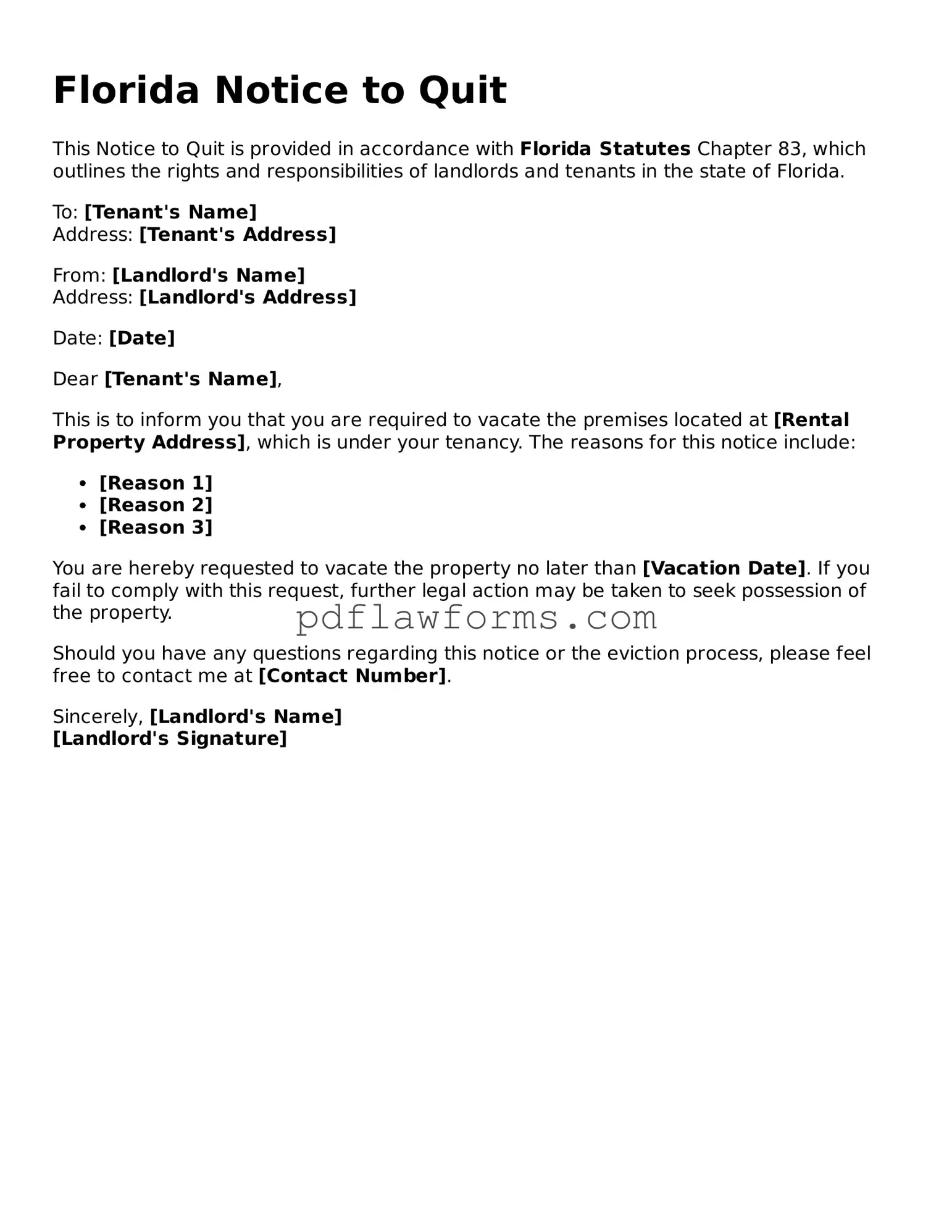Filling out the Florida Notice to Quit form can be a critical step in the eviction process. However, many individuals make mistakes that can lead to delays or complications. One common error is failing to provide the correct address of the tenant. It is essential to include the full and accurate address where the tenant resides. Missing or incorrect details can hinder the legal process.
Another mistake often seen is not specifying the reason for the eviction. The Notice to Quit should clearly outline the grounds for eviction, whether it is for non-payment of rent or lease violations. Without this information, the notice may be deemed insufficient, prolonging the eviction process.
Some individuals neglect to sign the form. A signature is a vital component that signifies the landlord's intent. Without a signature, the notice may lack validity. It is also important to date the form properly. An undated notice can create confusion about when the tenant should respond.
Additionally, many people forget to provide a clear deadline for the tenant to vacate the premises. This deadline should comply with Florida law, which typically requires a minimum notice period. Failing to state this timeframe can lead to misunderstandings and disputes.
Another frequent oversight is not delivering the notice correctly. Florida law requires that the Notice to Quit be served in a specific manner, such as by personal delivery or certified mail. Ignoring these requirements can result in the notice being ineffective.
Some landlords also make the mistake of using outdated forms. It is crucial to ensure that the form being used is the most current version. Laws and requirements can change, and using an outdated form may lead to complications.
Additionally, people sometimes overlook the need for additional documentation. Depending on the circumstances, attaching relevant documents, such as a lease agreement or proof of non-payment, can strengthen the case. Failing to include this information may weaken the landlord's position.
Finally, a lack of clarity in the language used can create confusion. It is vital to use clear and straightforward language. Ambiguities can lead to misunderstandings and may be challenged in court. Taking the time to ensure clarity can prevent unnecessary legal complications.
